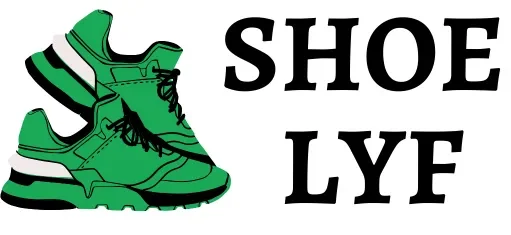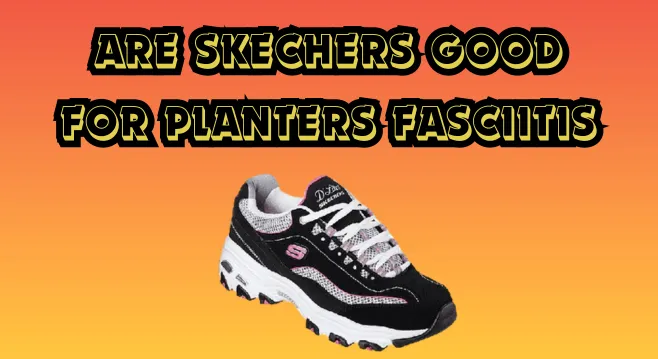If you’re someone who suffers from the nagging pain of plantar fasciitis, you know how debilitating it can be. This common foot condition, which causes inflammation and discomfort in the plantar fascia (the band of tissue that runs along the bottom of your foot), can make even the simplest tasks like walking or standing a real struggle. But fear not, my fellow foot pain warriors, because today we’re going to explore whether Skechers shoes might just be the solution you’ve been searching for.
What is Plantar Fasciitis?
Before we dive into the nitty-gritty details of whether Skechers are good for plantar fasciitis, let’s quickly recap what this pesky condition is all about.
Plantar fasciitis is an inflammation of the plantar fascia, the thick band of tissue that runs across the bottom of your foot, connecting your heel bone to your toes. This inflammation can cause intense heel pain, particularly when you first get out of bed in the morning or after prolonged periods of sitting or standing.
It’s a common condition that affects millions of people worldwide, especially those who are overweight, have high arches or flat feet, or participate in activities that put a lot of stress on their feet, like running or dancing.
The Importance of Proper Footwear
When it comes to managing plantar fasciitis, one of the most crucial factors is wearing the right footwear. Poorly designed or ill-fitting shoes can exacerbate the condition by putting unnecessary stress on the plantar fascia and failing to provide adequate support and cushioning.
This is where Skechers come into play. Known for their commitment to comfort and innovative designs, Skechers has several shoe lines that cater specifically to those with foot-related issues, including plantar fasciitis.
The Skechers Advantage for Plantar Fasciitis
So, what makes Skechers a potential game-changer for plantar fasciitis sufferers? Here are some key features that set their shoes apart:
1. Cushioned Midsoles and Insoles
Many Skechers shoes, particularly those in their performance and walking lines, boast exceptionally cushioned midsoles and insoles. This extra padding helps to absorb shock and reduce the impact on your plantar fascia with every step, potentially alleviating the pain and discomfort associated with plantar fasciitis.
2. Arch Support
Proper arch support is essential for those with plantar fasciitis, as it can help distribute your weight evenly and reduce the strain on the plantar fascia. Skechers has a range of shoes designed with built-in arch support or removable insoles that allow you to customize the level of support to suit your specific needs.
3. Shock-Absorbing Outsoles
In addition to cushioned midsoles, many Skechers shoes feature shock-absorbing outsoles made from materials like rubber or foam. This added layer of cushioning can help minimize the impact on your feet, further reducing the strain on your plantar fascia.
4. Roomy Toe Boxes
Skechers is known for their roomy toe boxes, which allow your toes to move freely and spread out naturally. This can help alleviate the pressure and friction that can contribute to plantar fasciitis pain, especially if you have bunions or hammertoes.
5. Stability Features
Some Skechers models, particularly those designed for walking or running, incorporate stability features like sturdy heel counters and guide rails. These elements can help keep your feet properly aligned and supported, reducing the risk of overpronation or supination, which can exacerbate plantar fasciitis.
Skechers Models Recommended for Plantar Fasciitis
While Skechers has a wide range of shoes that could potentially benefit those with plantar fasciitis, some models stand out as particularly well-suited for this condition:
1. Skechers Go Walk Line
The Go Walk line from Skechers is known for its lightweight, responsive cushioning and innovative sole designs. Models like the Go Walk 5 and Go Walk Arch Fit feature high-rebound cushioning, removable insoles, and arch support, making them an excellent choice for plantar fasciitis sufferers.
2. Skechers Max Cushioning Line
As the name suggests, the Max Cushioning line from Skechers is all about, well, maximum cushioning. Shoes like the Max Cushioning Elite and Max Cushioning Premier boast ultra-cushioned midsoles and insoles, shock-absorbing outsoles, and supportive designs that can help reduce the strain on your plantar fascia.
3. Skechers Performance Line
For those with plantar fasciitis who lead an active lifestyle, the Skechers Performance line offers a range of athletic shoes designed with features like responsive cushioning, supportive uppers, and flexible yet stable platforms – all of which can benefit those with this foot condition.
Tips for Choosing the Right Skechers for Plantar Fasciitis
While Skechers offers many promising options for plantar fasciitis sufferers, it’s important to keep a few key factors in mind when selecting the right pair:
1. Proper Fit
No matter how well-designed a shoe is, if it doesn’t fit correctly, it won’t provide the support and relief you need. Make sure to get your feet properly measured and try on several sizes and widths to find the most comfortable and secure fit.
2. Consider Your Activities
The type of activities you engage in can influence the type of Skechers shoe that will work best for you. If you’re mostly walking or standing, a well-cushioned casual or walking shoe might be ideal. For more intense activities like running or hiking, opt for a performance or trail shoe with added stability and support features.
3. Removable Insoles
Look for Skechers models with removable insoles, as this will allow you to customize the level of arch support and cushioning to suit your specific needs. You may even want to consider investing in high-quality orthotic insoles designed specifically for plantar fasciitis.
4. Break Them In Gradually
Even the most comfortable shoes can cause discomfort if you don’t break them in properly. When you get a new pair of Skechers, wear them for short periods at first and gradually increase the wear time to allow your feet to adjust.
FAQs about Skechers and Plantar Fasciitis
To wrap up this article, here are some frequently asked questions (FAQs) about using Skechers for plantar fasciitis:
1. Are all Skechers shoes good for plantar fasciitis?
No, not all Skechers shoes are designed specifically for plantar fasciitis. Look for models in their performance, walking, and Max Cushioning lines, as these tend to offer the most supportive and cushioned features for this condition.
2. Can I wear Skechers with custom orthotics for plantar fasciitis?
Yes, many Skechers shoes have removable insoles, allowing you to easily swap them out for custom orthotics prescribed by your podiatrist or physical therapist.
3. Do Skechers offer shoes with night splints for plantar fasciitis?
While Skechers doesn’t currently offer shoes with built-in night splints, their well-cushioned and supportive designs can still be beneficial for plantar fasciitis sufferers when paired with appropriate night splints or braces.
4. How long do Skechers last for people with plantar fasciitis?
The lifespan of your Skechers shoes will depend on factors like how often you wear them, the intensity of your activities, and how well you maintain them. Generally, high-quality Skechers designed for plantar fasciitis can last anywhere from 6 months to a year with regular wear and proper care.
5. Can Skechers help prevent plantar fasciitis from occurring in the first place?
While Skechers aren’t a guaranteed preventative measure against plantar fasciitis, their cushioned and supportive designs can help reduce the strain on your plantar fascia, potentially lowering your risk of developing this condition – especially if you have other risk factors like being overweight or participating in high-impact activities.
conclusion
Remember, while Skechers offer many promising options for those with plantar fasciitis, it’s always a good idea to consult with a podiatrist or physical therapist to get personalized advice and treatment recommendations. Finding the right footwear is just one piece of the puzzle when it comes to managing this condition effectively.

